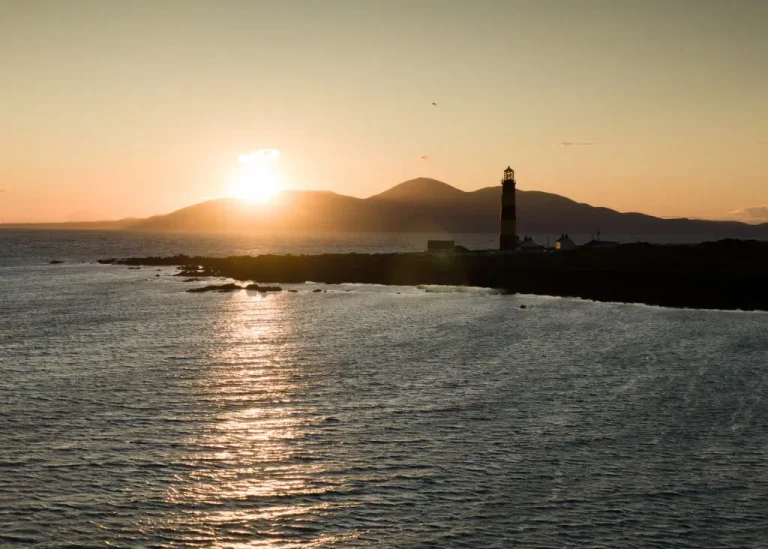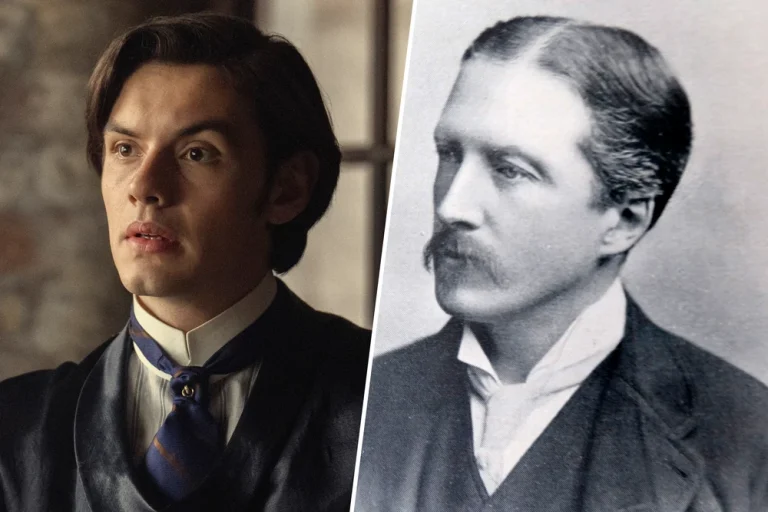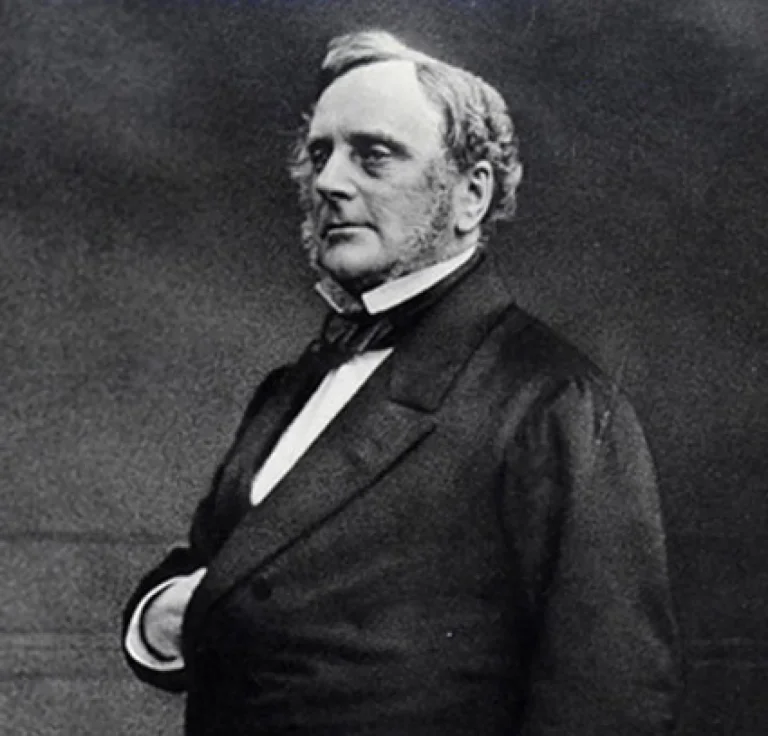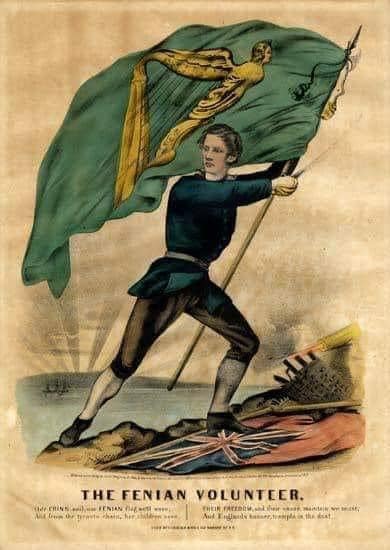

Perched atop the majestic Knocknarea Mountain in County Sligo, Queen Maeve’s Grave commands an unrivaled view of Ireland’s rugged western landscape. Known as the fierce and legendary queen of Connacht, Maeve (or Medb, as her name is also spelled) left a legacy that continues to capture imaginations. Her supposed final resting place is not just a mound of stones but a symbol of power, conflict, and Ireland’s rich tapestry of myths.
Where Was Queen Maeve Buried?
Queen Maeve’s grave site sits prominently on the summit of Knocknarea, a mountain steeped in history and mythology. Her cairn, a massive stone structure believed to date back to the Neolithic era, is one of Ireland’s largest unexcavated passage tombs. Local lore tells us that Maeve was buried upright, facing her enemies to the north—a testament to her defiance and warrior spirit.
Visiting the cairn offers a sense of awe as you gaze upon the stones that have withstood the test of time. For a preview of this breathtaking site, explore Queen Maeve’s grave photos and let them inspire your journey to uncover her legacy.
Where Was Queen Maeve Killed?
Maeve’s death is as dramatic as her life. According to legend, she was slain by her nephew Furbaide during a vengeful plot. Using a slingshot, Furbaide launched a piece of hard cheese—yes, cheese—that struck Maeve in the head, ending her reign. Her death site is often associated with Loch Ree in Roscommon, but her burial on Knocknarea remains the most enduring symbol of her story.
What Queen is Buried in Sligo?
Queen Maeve is the queen most famously linked with Sligo. Though her exact burial remains unverified, the cairn on Knocknarea is widely accepted as her resting place. It stands as a monumental tribute to Maeve’s larger-than-life persona and her enduring role in Irish mythology.
For more insights into Maeve and other legends of the region, don’t miss Diarmuid and Gráinne’s Cave: A Tale of Love, Loss, and Legend.
How Long Does it Take to Walk the Knocknarea?
The Queen Maeve’s Trail Map provides several routes, but the most popular hike up Knocknarea takes about 1.5 to 2 hours round trip. The path is moderately challenging, with some steep sections, but it rewards hikers with sweeping views of the Atlantic Ocean, Strandhill, and the surrounding countryside.
Ensure you bring proper footwear and plenty of water, and take your time to absorb the stunning scenery. The trail is rich with mythology, offering a journey into Ireland’s storied past as you ascend.
Where is Queen Maeve Now?
Maeve resides in the realm of legend, but her presence is deeply felt in Sligo, particularly on Knocknarea. Her cairn looms as a reminder of her indomitable will and warrior spirit. While her physical remains are lost to history, Maeve’s legacy lives on in the tales told by locals and the countless visitors who trek to her grave.
Did Queen Maeve Have a Baby?
Yes, Maeve had multiple children, many of whom play key roles in Irish mythology. Her most famous offspring include Maine Mór, who led her armies, and Findabair, her daughter, who features prominently in the epic tale Táin Bó Cúailnge (The Cattle Raid of Cooley). Maeve’s familial relationships are complex, underscoring her multifaceted character as a leader, mother, and figure of myth.
Who is Queen Maeve a Parody Of?
Some interpretations of Maeve’s character suggest she may be a parody or critique of powerful women in early Irish society. However, others see her as a representation of sovereignty and the land itself, embodying both its bounty and its capacity for conflict. Modern adaptations have embraced Maeve’s complexity, celebrating her as a symbol of female strength and independence.
Who Killed Maeve?
Maeve’s death at the hands of her nephew Furbaide is one of the most unusual and vivid tales in Irish mythology. His use of a slingshot and hard cheese to kill her demonstrates the blend of humor and tragedy often found in ancient Irish stories. While the circumstances may seem absurd, they highlight the enduring animosity Maeve inspired among her enemies.
Was There Ever a Queen of Ireland?
Ireland never had a singular queen in the historical sense, as its governance was divided among provinces and ruled by kings and chieftains. However, Maeve’s story casts her as a queen in every sense—commanding armies, waging wars, and embodying the fierce independence of her land and people. Her role in mythology elevates her to a status akin to a queen of all Ireland, particularly in the west.
Exploring Queen Maeve’s Grave
To fully immerse yourself in Maeve’s story, plan a visit to Knocknarea. The cairn is not just a destination; it’s a journey through history, myth, and breathtaking natural beauty. Use a Queen Maeve’s Grave Map to navigate the trail, and don’t miss the chance to capture Queen Maeve’s Grave photos that will leave you in awe of Ireland’s rugged mystique.
Parking is available near the base of Knocknarea, and clear signage ensures you’ll find your way. The ascent is manageable for most fitness levels, making it an accessible adventure for anyone curious about Queen Maeve Ireland and her enduring legacy.
Connect with Ireland’s Mythical Past
For more legendary tales and hidden gems in Ireland, explore Exploring the Mystical Caves of Kesh: A Journey Through Ireland’s History and Legends and Sligo Town: The Heart of Yeats Country. And don’t miss the poetic journey into William Butler Yeats: Nobel Prize in Literature 1923.
Maeve’s tale, much like her grave, is monumental. It’s a story that challenges, inspires, and ultimately leaves us in awe of Ireland’s legendary past. Whether you’re drawn by the history, the myth, or the allure of Maeve herself, her grave on Knocknarea is a must-visit landmark for anyone seeking a deeper connection to the heart of Ireland.
The Power and Legacy of Queen Maeve
Queen Maeve’s story is not just one of war and conquest; it’s also a tale of resilience, leadership, and the enduring power of myth. For centuries, Maeve has been a symbol of Ireland’s untamed spirit, representing the fierce independence and vitality of the land and its people. Her name has become synonymous with strength, cunning, and a refusal to be subdued.
The cairn atop Knocknarea—Queen Maeve’s Grave Sligo—serves as both a physical and symbolic representation of her legacy. The towering mound of stones is visible for miles around, a beacon of the past that calls out to those who seek to understand Ireland’s cultural heritage.
Was Queen Maeve Real?
This question has intrigued historians and mythologists for generations. While there is no definitive evidence to confirm Maeve’s existence as a historical figure, she likely has roots in a real queen or chieftain from Ireland’s early history. Over time, her story was woven into the fabric of Irish mythology, where she became larger than life—equal parts historical figure, literary archetype, and cultural symbol.
The tale of Maeve’s leadership during the Táin Bó Cúailnge (The Cattle Raid of Cooley) showcases her strategic mind and formidable presence. Whether or not Maeve truly lived, her legend reflects the values and struggles of ancient Ireland, making her a figure of profound cultural significance.
How Did Queen Maeve Die?
Maeve’s death, as described in Irish legend, is as unique and colorful as her life. After years of conflict and leadership, she met her end at the hands of her nephew Furbaide, who sought revenge for Maeve’s earlier actions against his family. Using a slingshot, Furbaide killed Maeve with a piece of hard cheese—a detail that underscores the blend of humor and tragedy that defines much of Irish mythology.
Maeve’s cairn on Knocknarea is said to mark her final resting place, and visitors often wonder how such an iconic figure met such an unusual end. Yet, this quirk of the story only adds to her legend, reminding us that even the mightiest leaders have their vulnerabilities.
Why Visit Queen Maeve’s Grave?
A visit to Queen Maeve’s Grave site is more than just a hike—it’s a journey through time, myth, and breathtaking natural beauty. As you ascend the mountain, you’ll pass through lush woodlands and open meadows, with panoramic views that stretch as far as the Atlantic Ocean. The cairn itself, with its immense scale and storied history, is a sight to behold.
- Trail Details: The hike is moderately challenging, taking 1.5 to 2 hours round trip. Use the Queen Maeve’s Trail Map to plan your route and ensure a safe and enjoyable journey.
- Photos and Views: The summit of Knocknarea offers some of the most stunning vistas in Ireland. Capture Queen Maeve’s Grave photos to remember your adventure and share the beauty of this iconic site.
- Practical Tips: Parking is available at the trailhead, and the path is well-marked. Be prepared for changing weather conditions, as the exposed summit can be windy and cool.
Exploring Ireland’s Legendary Sites
Queen Maeve’s Grave is just one of the many mythical landmarks that make Ireland a treasure trove of history and legend. After visiting Knocknarea, consider exploring nearby sites that delve deeper into the country’s storied past:
- Diarmuid and Gráinne’s Cave: A Tale of Love, Loss, and Legend: Another iconic Sligo landmark that offers a glimpse into Ireland’s rich mythology.
- Exploring the Mystical Caves of Kesh: A Journey Through Ireland’s History and Legends: Discover another fascinating chapter of Irish folklore.
- William Butler Yeats: Nobel Prize in Literature 1923: Learn about the poet who drew inspiration from the very landscapes you’ll explore.
- Sligo Town: The Heart of Yeats Country: Immerse yourself in the cultural heart of the region.
Why Queen Maeve Matters Today
In a world where stories of strong, independent women resonate more than ever, Queen Maeve’s legend offers timeless lessons. She was a leader who defied convention, a warrior who fought for her people, and a figure whose legacy has outlived millennia. Her story inspires not just admiration but also a sense of connection to Ireland’s deep and enduring spirit.
Visiting Queen Maeve’s Grave Sligo is a chance to step into her world, to feel the power of her story, and to experience the beauty of the land she once ruled. Whether you’re drawn by the myths, the history, or the natural splendor, a journey to Knocknarea is one that will stay with you forever.




3 thoughts on “Queen Maeve’s Grave: Unraveling the Mysteries of Ireland’s Warrior Queen”
Comments are closed.